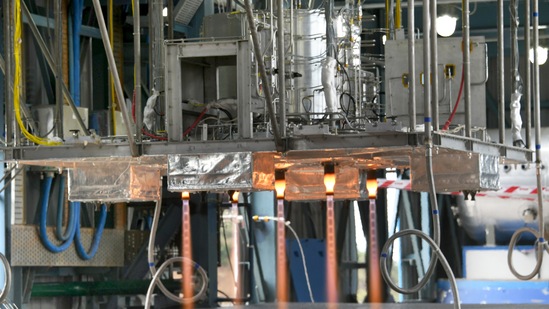ISRO successfully tests propulsion system of Gaganyaan service module
The propulsion system demonstration model was fired for 450 seconds at the ISRO Propulsion Complex in Mahendergiri, Tamil Nadu.
The Indian Space Research Organisation (Isro) has successfully conducted the first hot test to check the propulsion system of Gaganyaan’s service module – located below the crew module in which the astronauts will travel constitutes the spacecraft. The two modules remain connected till the re-entry into earth’s atmosphere.

As per previous descriptions by Isro chairperson Dr K Sivan, the whole configuration – crew module and service module -- is turned in the opposite direction during re-entry and the thrust of the engine is used to reduce the velocity.
The propulsion system demonstration model was fired for 450 seconds at the Isro Propulsion Complex in Mahendergiri, Tamil Nadu. The performance met the pre-test predictions. “A series of hot tests are planned to simulate various mission conditions as well as off-nominal conditions,” the space agency said in a statement.
The service module propulsion system consists of five main 440 N engines and sixteen 100 N thrusters to create a reaction control system. The system demonstration model used for the test, however, had five 440 N engines and eight 100 N thrusters to qualify the propulsion system on ground.
Isro in July conducted the final hot test of its L110 liquid engine to be used in the GSLV-MK III launch vehicle that will carry the Gaganyaan mission to space. This, experts said, was a pretty big milestone.
Ajay Lele, senior fellow working on space security and strategic technologies at the Institute for Defence Studies and Analyses, said, “ISRO is currently testing various modules of the mission, however, we need two clean tests of the complete system before we send astronauts to space. And, that is going to take probably another two years.”






